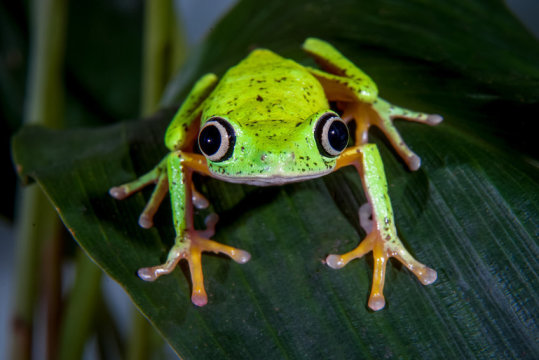[ad_1]
An international study led by The Australian National University (ANU) has found a fungal disease has caused dramatic population declines in more than 500 amphibian species, including 90 extinctions, over the past 50 years.
The disease, which eats away at the skin of amphibians, has completely wiped out some species, while causing more sporadic deaths among other species. Amphibians, which live part of their life in water and the other part on land, mainly consist of frogs, toads and salamanders.
The deadly disease, chytridiomycosis, is present in more than 60 countries — the worst affected parts of the world are Australia, Central America and South America.
Lead researcher Dr Ben Scheele said the team found that chytridiomycosis is responsible for the greatest loss of biodiversity due to a disease.
“The disease is caused by chytrid fungus, which likely originated in Asia where local amphibians appear to have resistance to the disease,” said Dr Scheele from the Fenner School of Environment and Society at ANU.
He said the unprecedented number of declines places chytrid fungus among the most damaging of invasive species worldwide — similar to rats and cats in terms of the number of species each of them endangers.
“Highly virulent wildlife diseases, including chytridiomycosis, are contributing to the Earth’s sixth mass extinction,” Dr Scheele said.
“The disease we studied has caused mass amphibian extinctions worldwide. We’ve lost some really amazing species.”
Dr Scheele said more than 40 frog species in Australia had declined due to the fungal disease during the past 30 years, including seven species that had become extinct.
“Globalisation and wildlife trade are the main causes of this global pandemic and are enabling the spread of disease to continue,” he said.
“Humans are moving plants and animals around the world at an increasingly rapid rate, introducing pathogens into new areas.”
Dr Scheele said improved biosecurity and wildlife trade regulation were urgently needed to prevent any more extinctions around the world.
“We’ve got to do everything possible to stop future pandemics, by having better control over wildlife trade around the world.”
Dr Scheele said the team’s work identified that many species were still at high risk of extinction over the next 10-20 years from chytridiomycosis due to ongoing declines.
“Knowing what species are at risk can help target future research to develop conservation actions to prevent extinctions.”
Dr Scheele said conservation programs in Australia had prevented the extinction of frog species and developed new reintroduction techniques to save some amphibian species.
“It’s really hard to remove chytrid fungus from an ecosystem — if it is in an ecosystem, it’s pretty much there to stay unfortunately. This is partly because some species aren’t killed by the disease,” he said.
“On the one hand, it’s lucky that some species are resistant to chytrid fungus; but on the other hand, it means that these species carry the fungus and act as a reservoir for it so there’s a constant source of the fungus in the environment.
Co-researcher Dr Claire Foster, who is also from the Fenner School of Environment and Society, said the ANU-led study involved close collaboration with Professor Frank Pasmans and Dr Stefano Canessa at the University of Ghent, Belgium, alongside 38 different amphibian and wildlife disease experts from around the world.
“These collaborators enabled us to get first-hand insight into what has been happening on the ground in those countries,” she said.
The study is published in Science and was supported by the Threatened Species Recovery Hub of the Australian Government’s National Environmental Science Program.
[ad_2]















